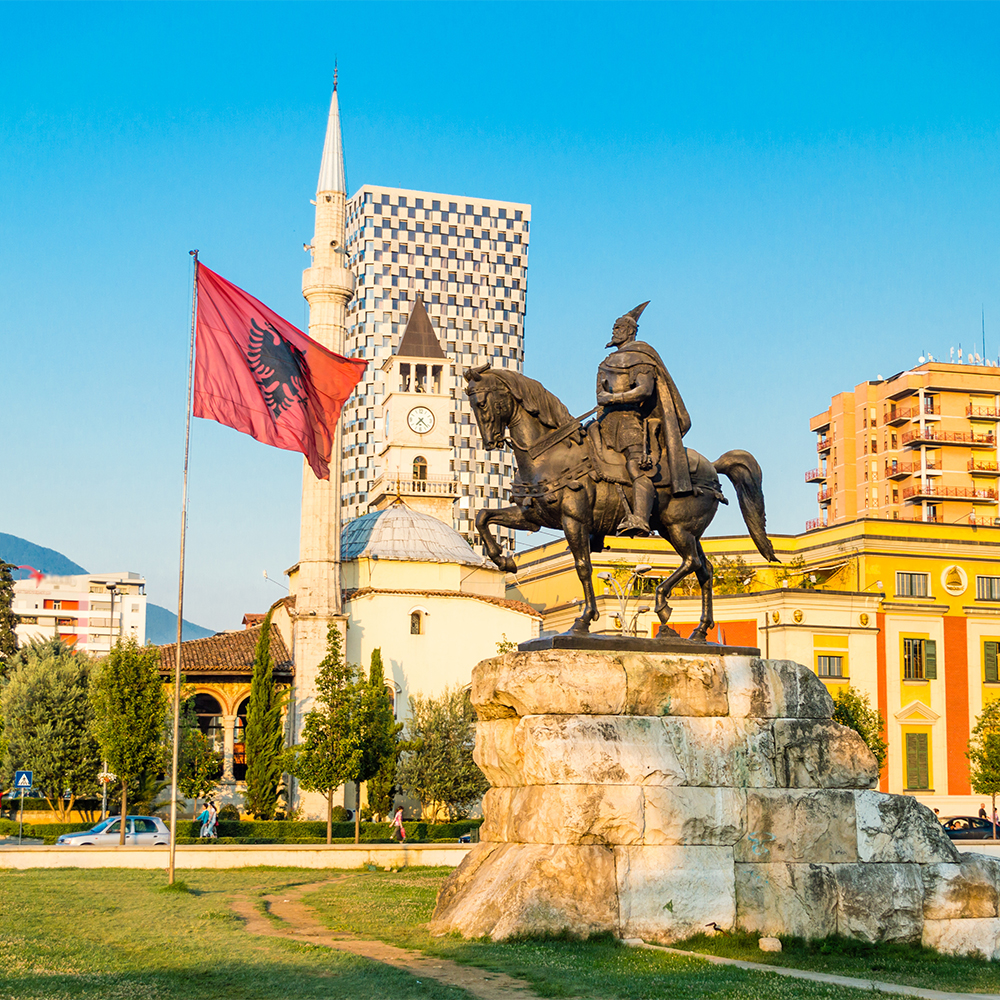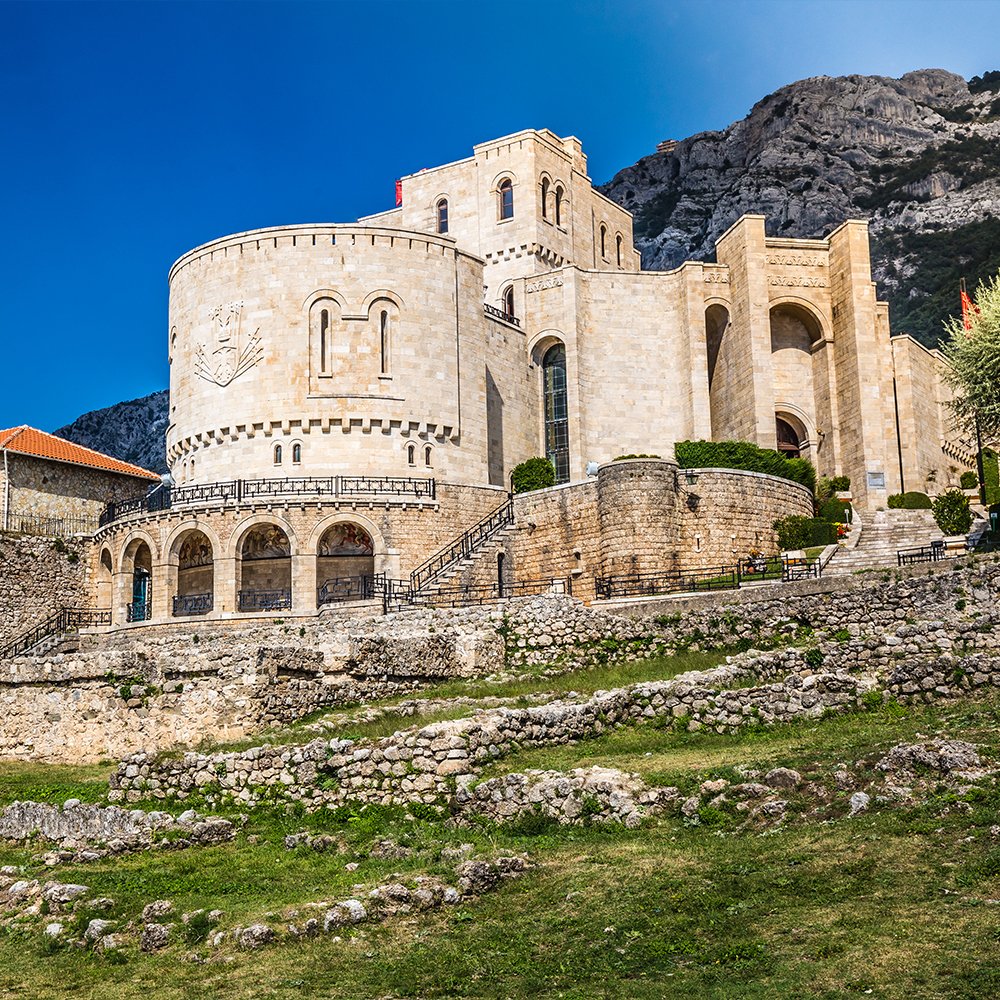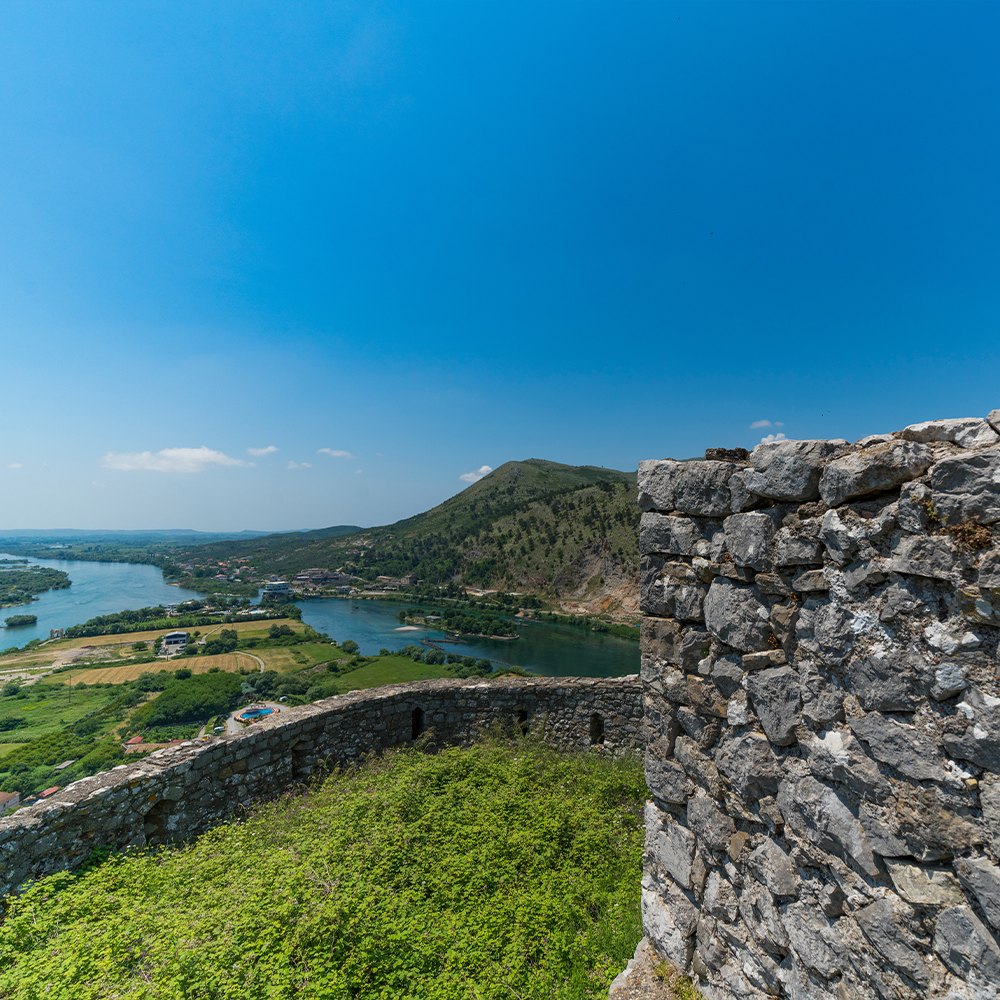Albania






Overview
Welcome to our beautiful country, also known as the land of eagles. Albania is an attractive tourist destination, not only because of its variety of landscapes, but also thanks to its wealth of cultural treasures and its history. Albania is in a very important part of the Balkan Peninsula, in front of “Ancient Rome” and on the road to Byzantium and the “capital of the world” at that time Constantinople. Therefore, many conquerors have crossed the region, leaving traces of their culture. The treasures and the remains of the great civilizations of the region are still visible today, including the Greeks, Romans, Byzantines, Ottomans, Venetians and modern Italians. In our archaeological park, you have the opportunity to touch the ruins of some of these powerful civilizations. A variety of Byzantine and post-Byzantine churches, mosques, monasteries with precious frescoes and icons. Old bridges and other monuments will enrich your visit to Albania. And to crown the heights of many rugged mountains of the country are castles dating from the time of the Illyrians and Medieval Times. The castles of Berat and Gjirokastra, with their traditional architecture, have also been very popular over the centuries by many visitors who have traveled through Albania. Archeology admires the mystical atmosphere of the castle of Butrint and enjoys the beautiful panorama of the Roman city Apollonia. UNESCO has also honored with the addition of three of our sites to the prestigious List of World Cultural Heritage. Albania living connection to its rich cultural heritage is also complimented with its commitment to keep pace with a life highly vibrant and contemporary, echoing its spirituality and its presence in the European culture. We are happy you have chosen to visit us and we hope that you will have a pleasant stay. In this brochure you will find a summary of our recommendations of choices for places that you should visit during your stay.
Highlights
Fast Facts
Good to Know
Events
ALBANIA & MONTENEGRO 1 NIGHTS / 2 DAYS VIA BUDVA
Meet in Tirana and transfer toward Budva via Saint Shkodra. Continue toward the town of Shkodra, a cultural center and one of Albania’s oldest cities where we’ll see the ruins of Rozafa Castle, set on a hill high above the city. Proceed toward Ulcinj. According to historical data, Ulcinj is for sure one of the oldest towns on the Adriatic coast. It is thought that Ulcinj is more than 2.000 years old. In this area for centuries the cultures of Orient and the West collided, which by the richness of the historical inheritance, can be felt in every step. As the tracks of the first settlements in Ulcinj appear even before V century B.C. it is considered that Ulcinj was founded by Illyrians, the people of the Indo-European origin. At the time of the free Illyrian state, Ulcinj experiences its greatest bloom. The original name of Ulcinj was Kolhinijum, and it got such name by Kolhidians (a tribe of Greek origin) for which is thought that they are the founders of the old Ulcinj Lake. Continue toward Budva via St. Stefan Island. Check-in at Avala Hotel in Budva. Dinner in the old town. Overnight stay at Avala Hotel in Budva. (B, L, D)
Budva is the metropolis of Montenegrin tourism thanks to the great number of beaches and hotels that make this a most desirable tourist destination. Budva Old Town lies on a small peninsula and represents a treasure chest of culture heritage. Crossed with narrow streets and squares are famous buildings, the Church Sv. Trojica, housing the tomb of the exquisite writer Stjepan Mitrov Ljubisa, the Churches of Sv. Ivan, Sv. Bogorodica and Sv. Sava. Apart from its natural beauty, its bay islands and beaches for example, Budva is rich in historic monuments. After Budva we take the ladder of Kotor, a winding, breathtaking road down to the Bay of Kotor, the deepest fjord in southern Europe, and the only fjord in the Mediterranean. Along the way, we will tour the towns of Risan and visit its old town and Kotor’s St. Triumph. After the visit of Kotor drive back to Tirana.
ALBANIA, MACEDONIA & KOSOVO 1 NIGHTS / 2 DAYS VIA SKOPJE
Meet in Tirana and transfer toward Ohrid via Saint Naum. Set amidst lush verdure where the River Crn Drim tumbles into the lake, the monastery of St. Naum is a refuge of tranquility at the very southwestern corner of the Macedonian Republic. Situated 29 km (18 m) from the town of Ohrid and only 1 kilometer (0.6 m) from the Albanian border, the monastery brings the Macedonian experience to a dramatic culmination. As with most Byzantine churches, St. Naum was chosen primarily for its location – on a high, rocky outcropping over the lake, above deep forests and life-giving springs of the river Crn Drim. The monastic complex and church of St. Naum were built originally at the turn of the tenth century by the monk that beared the same name; Macedonians believe you can still hear the saint’s heartbeat by pressing an ear to his stone coffin inside the church. Continue toward Ohrid for half day sightseeing tour of Ohrid. The resort town of Ohrid is one of the oldest settlements in Macedonia, dating from before the Slavic period. Ohrid is an UNESCO site located in the Ohrid/Prespa region near Galicica National Park. It has a long rich history but is perhaps best known for the missionary brothers Cyril and Methodius who arrived in Ohrid in 886AD and made Ohrid a leading center of Slavic culture and literary activities. The brothers are credited with the creation of the Cyrillic Alphabet which helped them spread their missionary work in the Slavic world. After our journey on the lake we continue sightseeing on foot strolling through the picturesque alleys of the old town, discovering the craftsmanship of the rich tradition of silver filigree, wood carving, and Ohrid’s Pearls. Visit the protected archaeological museum and the House of Robevc. Visit the first renaissance frescoes in the church of St. Sophia and continue to the Mother of God Church Perivlepta with the apocryphal scenes in rich frescoes from the life of the Virgin. Stop at the Classical Theatre, built 2000 years ago and still used today. At Plaoshnik tour the excavations of the Monastery of St. Pantelejmon, seat of the first Slavic University in Europe founded by St. Clement. Time for lunch of Ohrid trout prepared fresh from the lake. Lunch in Ohrid and proceed toward Skopje. Check-in at Holiday Inn Hotel in Skopje. Night tour of Skopje. Overnight stay at Holiday Inn Hotel. (B, L, D)
American buffet breakfast at Holiday Inn Hotel in Skopje. Depart toward Prizren via Pristina. Start the sightseeing tour of Pristina. Pristina is the capital and largest city of Kosovo. The population of Pristina is 198,000. The city has a majority Albanian population, alongside other smaller communities including Bosniaks, Romans and others. It is the administrative, educational, and cultural center of Kosovo. In Pristina we visit Mother Theresa Boulevard, Scanderbeg Statue, Ethnographic Museum. After the visit in Pristina drive toward Prizren. In Prizren we will visit: the Ottoman Bridge, the Sinan Mosque, the Gazi Mehmet Pasha Hamam, Albanian League House etc.
Free time in Prizren for lunch. After Prizren depart toward Tirana via the new highway. Arrival in Tirana.
PHOENIX TOURS: ALBANIA, MACEDONIA, BULGARIA, ROMANIA & SERBIA 10 NIGHTS / 11 DAYS FROM TIRANA TO BELGRADE
Arrival at Mother Theresa International Airport in Tirana and transfer toward Kruja, home of Albania’s National hero, Scanderbeg, who in the 15th century successfully defended his homeland against the Turks. Sightseeing will include the Old Castle, the Scanderbeg Museum, the Ethnographic Museum, and shopping at the Turkish-style bazaar.
Lunch in Kruja at traditional restaurant inside the castle. After Kruja drive toward Tirana. Your guide will show you the many sights of Skanderbeg Square whose architecture influences range from Ottoman Turkish to Fascist Italian to Chinese Communist. Tour the Mosque of Et’hem Bey; the Clock Tower; the statue of G.K. Skanderbeg (Albania’s national hero), the Palace of Culture, The National Gallery and the National History Museum, with its distinctive mosaic. Check-in at hotel in Tirana. Dinner and overnight at hotel in Tirana (B, L, D)
After breakfast drive to Ohrid via Elbasan. Arrive in Saint Naum and have lunch at local restaurant by the lake side. After lunch visit the monastery of St. Naum, close to the Albanian border. Take a rowboat ride through the natural mineral springs, and photograph the peacocks that roam around the grounds. Then we’ll take the van along the winding lakeside road into the ancient city of Ohrid, supposedly home to 365 churches! (If the weather and other conditions allow we will replace the van with a nice enjoyable boat ride along the lakeshore). Take a tour of the city, visit Samuel’s fortress dating from the 11th century and other important ancient churches and schools of Ohrid. Orthodox Byzantine monks brought Christianity to Ohrid in the 10th century from Greece through the effort of St. Cyril and Methodius who crafted the Cyrillic Alphabet here. Afternoon for leisure and shopping. Dinner and overnight in Ohrid. (B, L, D)
After breakfast depart toward Skopje. Arrival in Skopje and have a short introduction of the country’s capital. Organized sightseeing of Mother Theresa House, Old Railway Station, and Stone Bridge. After the visit of Skopje check-in at the hotel. Dinner in a nearby restaurant with folklore show. Overnight stay in Skopje.
Early morning departure from Skopje toward Bulgaria. Arrival in Rila and have lunch at Rila monastery. After lunch visit the Rila Monastery UNESCO site, the most important monastery in Bulgaria. Drive toward Sofia. Arrival in Sofia and check-in at hotel in the city. Overnight stay at hotel in Sofia. (B, L, D)
In the morning start the sightseeing tour of Sofia including a visit to the National History Museum, where the gold and silver Thracian treasures are displayed. Also, see the Alexander Nevski Cathedral and Crypt Balance of the day at leisure. After the visit of Sofia depart toward Veliko Turnovo. Arrival in Veliko Turnovo and if time permits have the walking tour of the city.
Veliko Turnovo was the capital of Bulgaria’s Second State from the 12th to 14th centuries. The old city has a picturesque location on the banks of the meandering Yantra River. Visit Tsarevetz Hill where you will find relics of the mighty fortress of the Bulgarian monarchs. After sightseeing tour of the city, proceed to check-in at hotel. Dinner and overnight stay at hotel in Veliko Turnovo. (B, L, D)
Get acquainted with the Romanian capital, once nicknamed “Little Paris”. During the tour you will visit the Parliament Palace, the second largest building in the world after the Pentagon, and the National Treasure. Listen how the Romanian people nearly succeeded to topple the last communist dictator in Eastern Europe in the Revolution Square. Your tour will bring you also to the Romanian Athenaeum, the Opera House, the National Military Club, the Military Academy, Triumphal Arch and The Village Museum. Farewell dinner with folklore show. (B, D)
Following breakfast, departure towards Peles. Arrival and tour the Peles Castle. Set dramatically in the hills above Sinaia, this 160 room palace, built in German Renaissance style, was completed in 1914 for the first Hohenzollern king of Romania, Carol I. Fortunately, as you’ll see, it is one of the best preserved royal palaces in Europe.
Continue toward Bran. Visit Bran Castle made famous by Bram Stoker’s novel as the residence of the vampire count, Dracula. Continue to Brasov. After arrival accommodation at your hotel and dinner (B, L, D)
After breakfast, walking tour of Brasov including the visit of the First Romanian School with an impressive collection of rare books and the Black church located in the city center. After the visit of Brasov continue toward the museum town of Sibiu. During the tour of Sibiu you will see the Huet Square, the Large Square, the Evangelical Cathedral, the Liars’ Bridge and others. Continue toward Timisoara. On the way to Timisoara we will visit the fortress of Huendoara that became the castle of the most preeminent king of the medieval era, Matia Corvin. The monument has a special glamour due to its different construction styles, the presence of military and civil innovations, as well as for the impetuous court life that animated it for 400 years. Arrival to Timisoara and accommodation with dinner. (B, L, D)
After breakfast visit Timisoara, the city where Romanian revolutions started in 1989. Arrive in Timisoara and view ruins of Timisoara Fortress, Huniady Castle, Pasha’s Wheel, fabric residential areas, and Corso shopping area.
Continue toward Belgrade and accommodation. Dinner and overnight stay in Belgrade. (B, L, D)
Your morning sightseeing tour includes the city’s main attractions including a visit to the imposing Kalemegdan Fortress, dramatically situated above the confluence of the Sava and Danube Rivers.
Continue the tour and view the Republic Square and Knez Mihajlova Street, the Saint Sava Temple (the largest Orthodox Church in the city) as well as Tito’s Memorial. Afternoon optional for shopping or boat ride at Danube River. (B, L, D)

